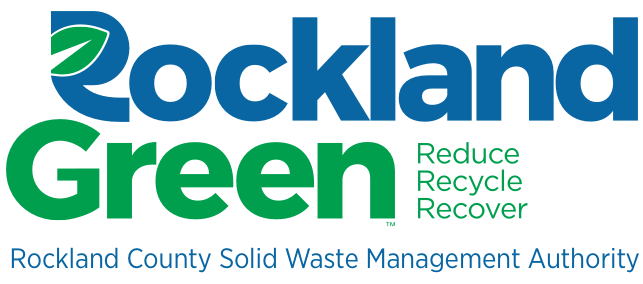October 21, 2025
Did you know that 25% of items placed in recycling bins are not recyclable?
That greasy pizza box? A plastic bag? The takeout container with sauce smears and crumbs? What goes where?
Learn more about common recycling myths and how you can help Rockland County recycle effectively!
Myth #1: If a product has the three-arrow recycling symbol, it can go in your curbside recycling bin.
FACT: The three-arrow symbol is not a guarantee of recyclability. Some reports suggest that the plastics industry originally pushed the placement of recycling symbols on plastic products to make consumers think that plastics were widely recycled. This happened even though the infrastructure to recycle most plastics didn't exist. The symbol was promoted anyway to combat growing environmental concerns and maintain plastic production levels.
What we should do instead:
Never assume the recycling symbol means "recyclable." Check Rockland Green's accepted materials guidelines for specific information about what your local program accepts. And be aware that “wishcycling” (tossing questionable items in recycling and hoping for the best) causes more harm than good.
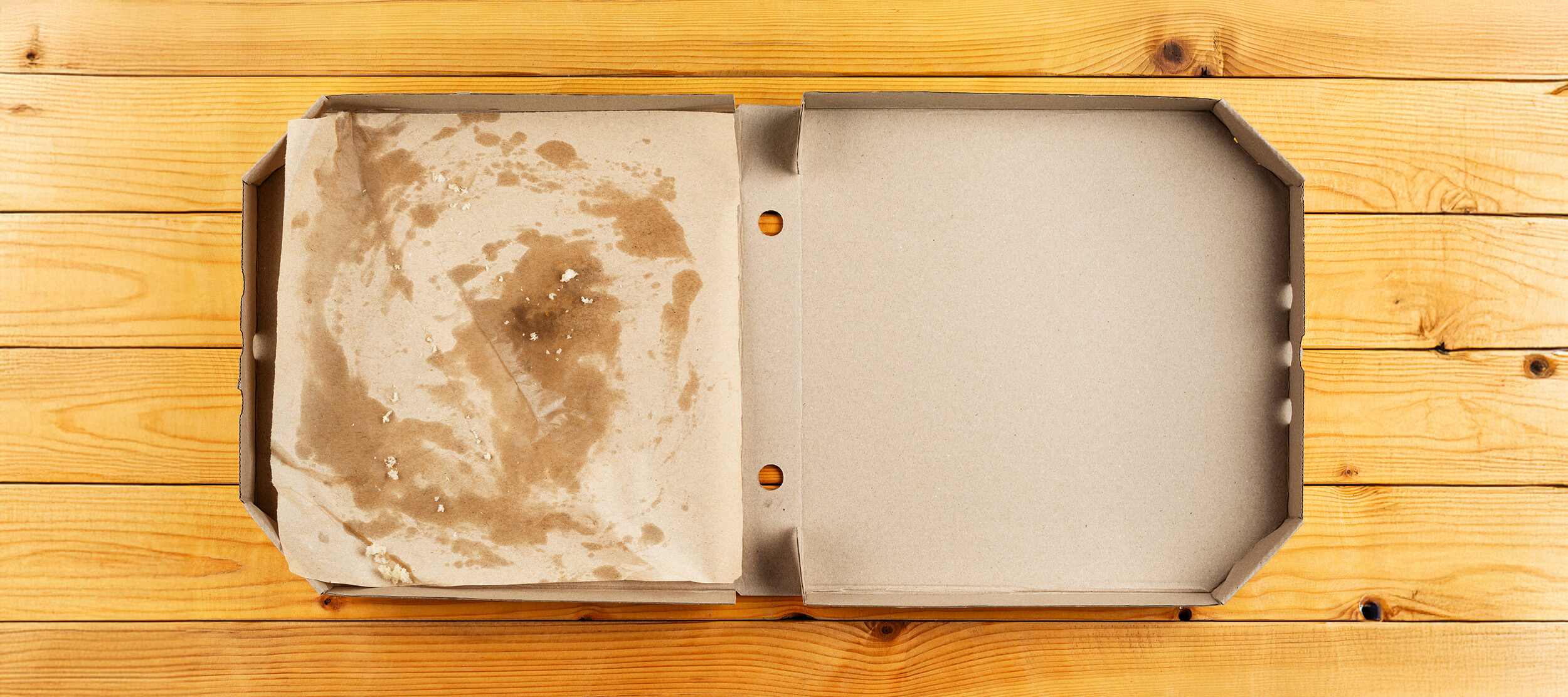
Myth #2: Pizza boxes must always be thrown in the trash because of grease.
FACT: Pizza boxes with just a bit of grease can now be recycled in your blue bin! Only heavily greased boxes should be trashed.
The science behind it:
Modern repulping equipment at paper recycling facilities can handle small amounts of food residue without compromising the quality of recycled paper products. But it’s a different story if the box is saturated with oil or has a lot of food debris stuck to it.
RECYCLE THESE:
- Pizza boxes with light grease spots or minor staining
- Boxes where cheese residue can be scraped or brushed off
- Boxes with grease marks but no dripping oil
- The clean top lid of any pizza box
TRASH THESE:
- Boxes saturated with oil that leaves grease on your hands
- Boxes with large amounts of stuck-on cheese or toppings
- Boxes that drip when tilted
- Boxes that have absorbed liquid to the point of falling apart
Best practice:
Tear the box and place the clean top portion in your recycling bin and the heavily soiled bottom in your trash. This prevents recycling contamination while recovering the clean cardboard.
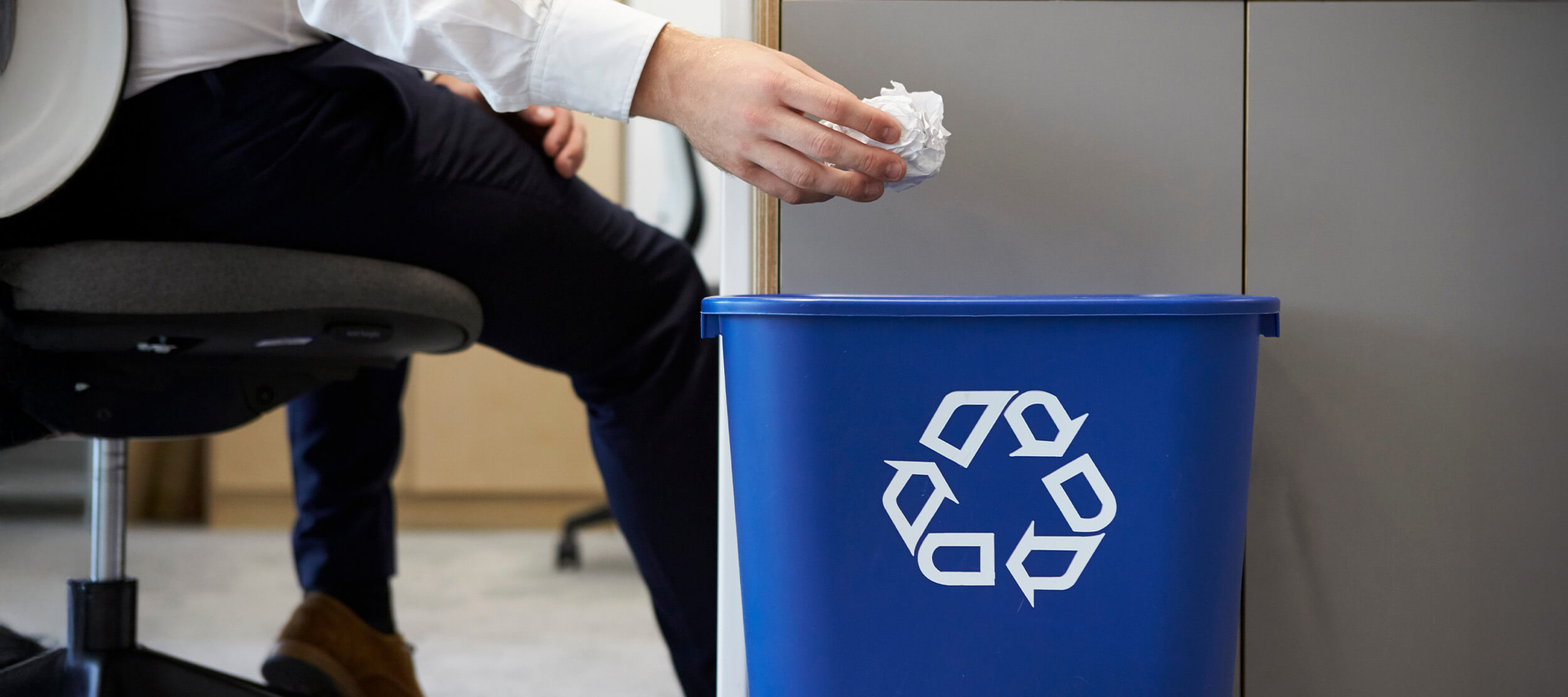
Myth #3: If it's made of paper, it can be recycled.
FACT: Paper recycling depends on fiber length, contamination level, and coatings.
Paper products you CANNOT recycle curbside:
- Paper towels and napkins – Fibers are too short and usually contaminated with food or liquids
- Tissues and toilet paper – Sanitary concerns and degraded fibers
- Thermal receipt paper – Contains BPA and other chemicals that contaminate paper streams
- Most wax-coated or plastic-lined paper – Juice boxes, frozen food packaging, most coffee cups
- Loose shredded paper – If it isn’t in a paper bag
- Heavily soiled paper – Pizza-grease-saturated, oil-soaked, food-contaminated
- Laminated paper – Plastic coating prevents fiber recovery
- Paper with glitter, metallic coating, or foil – Mixed materials cannot be separated
Paper products you CAN recycle:
- Newspapers and magazines – High recycling rate, widely accepted
- Office paper and mail – Including window envelopes (windows are removed during processing)
- Paperboard – Cereal boxes, shoe boxes, tissue boxes (remove plastic windows if present)
- Shredded paper – Only if it’s contained in a paper bag (place the bag in the blue bin)
- Brown paper bags – Clean and dry
- Telephone books – Accepted in most programs
- Non-metallic wrapping paper – If no plastic coating or glitter
- Gable boxes
- Softcover and hardcover books – Only if the cover is removed
- Cardboard boxes
Bonus Tip: Corrugated cardboard has one of the highest recycling rates of any material. To maximize recycling:
- Flatten boxes to save space
- Remove all packing materials (bubble wrap, foam, plastic air pillows)
- Keep cardboard dry (moisture ruins its recyclability)
- Break down large boxes into pieces no larger than 3 feet square
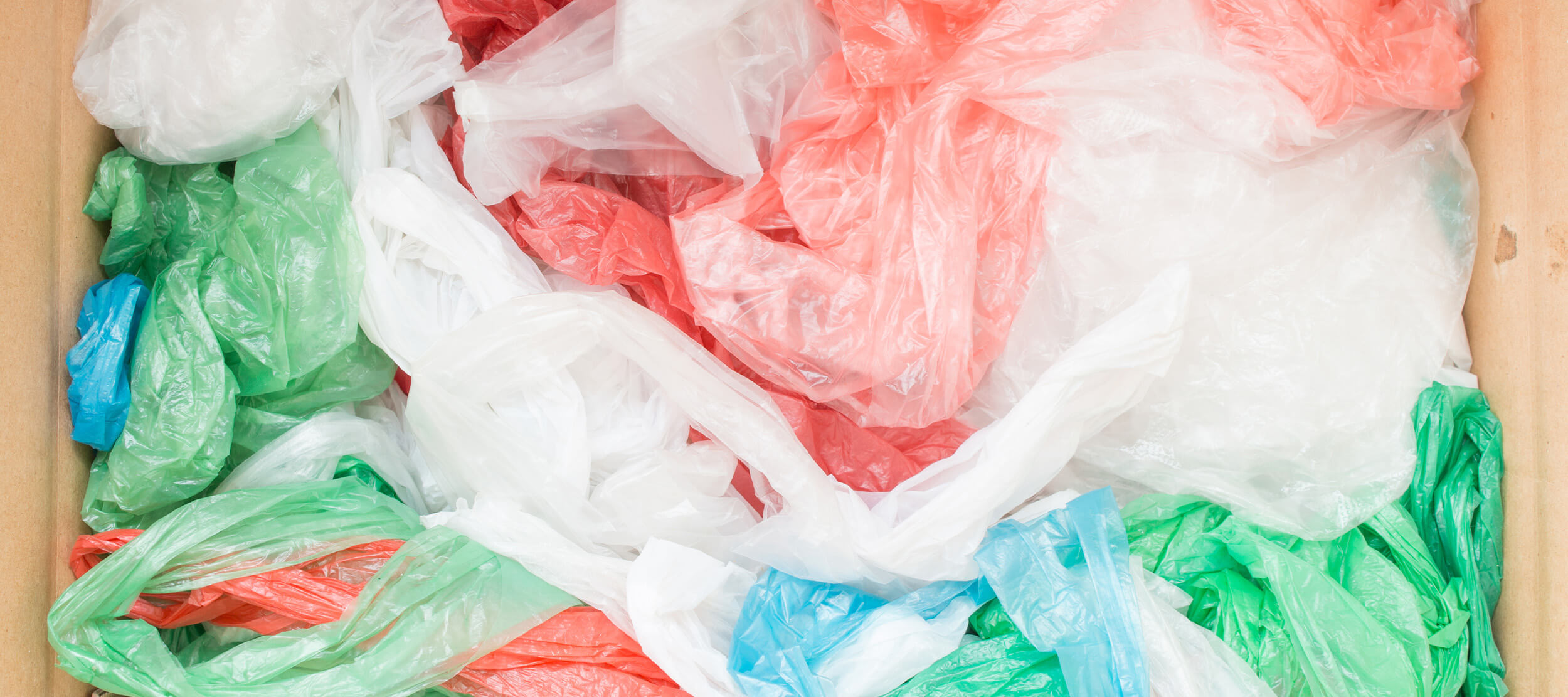
Myth #4: Plastic bags belong in curbside recycling.
FACT: Plastic bags cause equipment damage costing facilities millions annually, and must never go in curbside bins.
Why are plastic bags dangerous to recycling facilities?
When bags go into curbside recycling, they create "tanglers" at recycling facilities. These tanglers wrap around sorting machines. This causes costly breakdowns, halts in production to manually cut away the plastic, and safety risks for workers.
Plastic bags are technically recyclable, but they require separate collection through retail drop-off programs. Most major grocery chains maintain collection bins near store entrances.
Store drop-off requirements may include:
- Bags must be clean and dry
- Remove receipts, food residue, and debris
- Bundle bags together for convenience
- No bags contaminated with food or liquids
- No biodegradable or compostable bags
Better solution: Eliminate plastic bags by switching to reusable shopping bags. A single reusable bag can replace hundreds of single-use plastic bags annually.
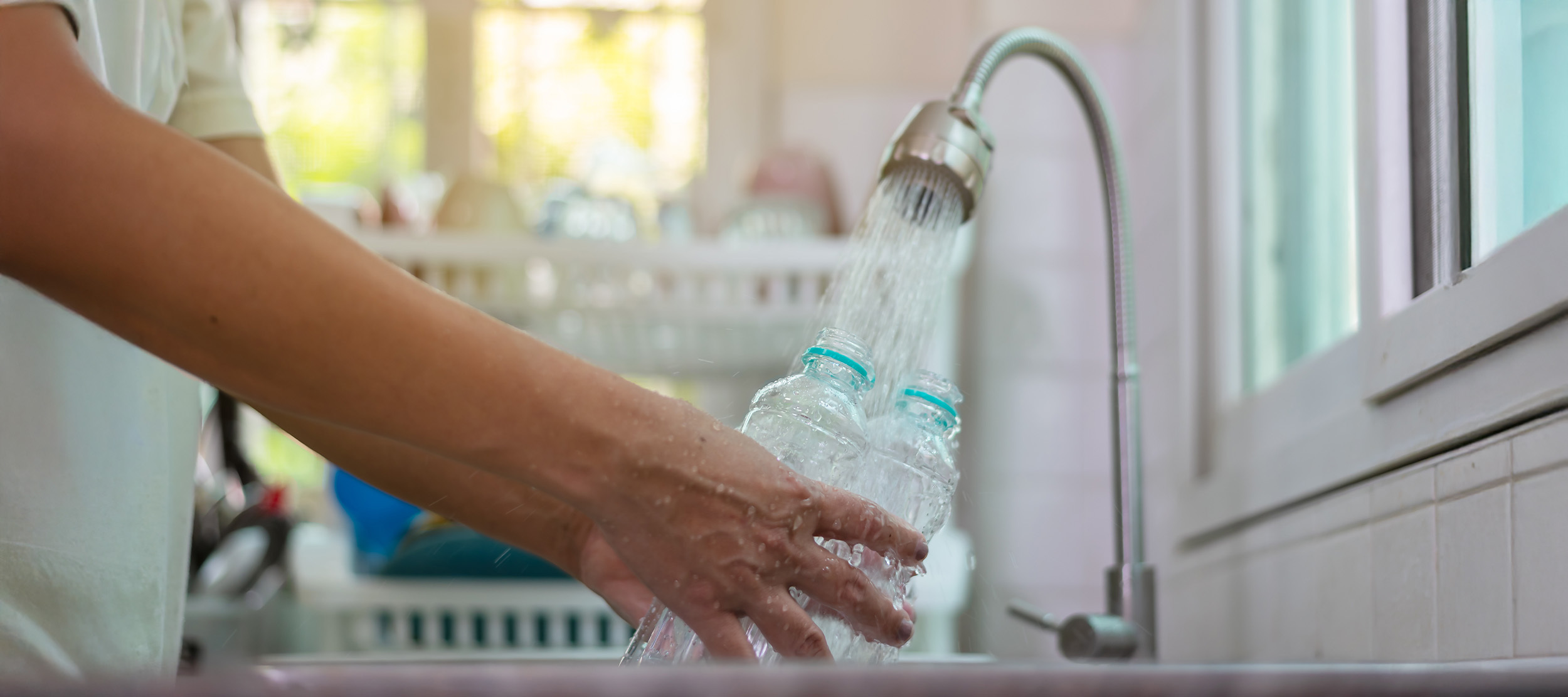
Myth #5: Recyclables need to be washed as thoroughly as dishes, or they can't be recycled.
FACT: Recyclables should be reasonably clean (empty, rinsed, and dry, but not sterile). A quick 5-10 second rinse is sufficient and environmentally appropriate.
The standard: Recycling facilities can handle trace amounts of food or liquid, but significant residue causes problems by attracting pests, creating odors, contaminating other materials, and adding weight that increases transportation costs.
The cleaning standard by material:
Plastic containers:
- Empty completely
- Quick rinse with cold water (5-10 seconds)
- No soap needed
Glass jars:
- Empty all contents
- Rinse until water runs clear
- Rinse thoroughly to remove residue (peanut butter, etc.)
- Labels can stay on
Single-use aluminum foil pans:
- Empty completely
- Quick rinse
- Remove any non-aluminum attachments (plastic handles, liners, etc.)
- Place in your green bin
Metal cans:
- Empty liquid completely
- Rinse to remove food residue
- Labels can remain
Cardboard:
- Must be dry (moisture ruins recyclability)
- Remove food debris
- Slight staining is acceptable
- Heavy grease saturation disqualifies it
Check Rockland Green's contamination prevention guidelines for examples of properly cleaned recyclables.
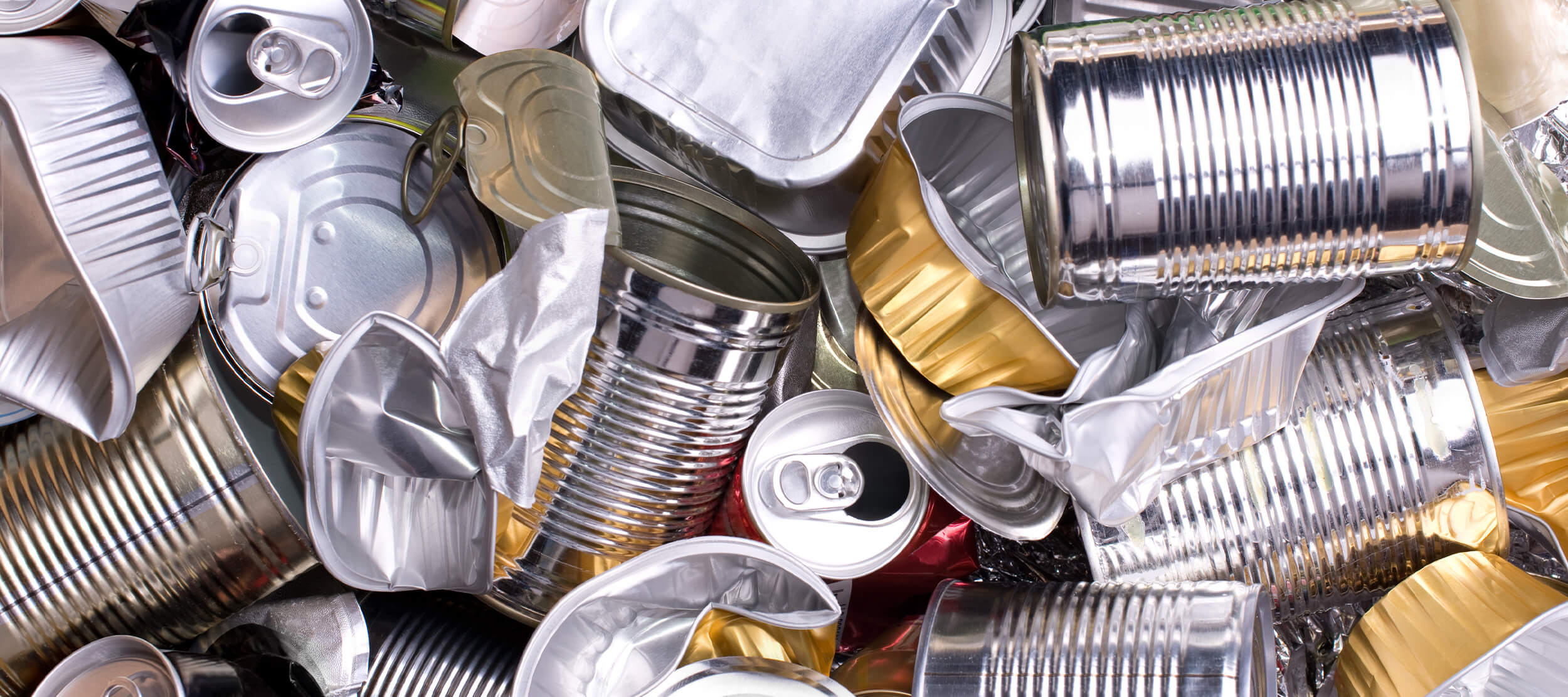
Myth #6: All metal items can go in curbside recycling.
FACT: Only specific metal food and beverage containers are accepted curbside. Most other metal items require alternative recycling.
Aluminum and steel cans are good for curbside recycling, but most other metal items aren't accepted due to size, safety concerns, or mixed materials.
Metals you CAN recycle curbside:
- Aluminum beverage cans (soda, beer, sparkling water)
- Steel/tin food cans (soup, vegetables, pet food, coffee)
- Aluminum foil and trays
- Metal jar lids and bottle caps
Metals you CANNOT recycle curbside:
- Pots, pans, and cookware (donate usable items or take to scrap metal facility)
- Wire hangers (return to dry cleaners or scrap metal)
- Small appliances and large appliances (require drop-off, bulk pickup or e-waste recycling)
- Propane tanks (hazardous, requiring special disposal)
- Electronics containing metal (require e-waste recycling)
- Construction scrap metal (must use scrap metal facilities)
- Empty aerosol cans (completely empty only, no pressure remaining)
Aerosol cans: Test by shaking. If you hear product sloshing or feel resistance when pressing the nozzle, it's not empty. Residual pressure creates explosion risks in collection trucks and processing facilities. Once empty, drop off this item at our Household Hazardous Waste Facility.
Ready to Become a Rockland County Recycling Expert?
Whether through miscommunication or deliberate misguidance, the recycling myths of yesterday aren't true today. For more clarification and details on correct recycling, please reference our complete recycling guidelines for accepted materials and make every green and blue recycling bin count!
